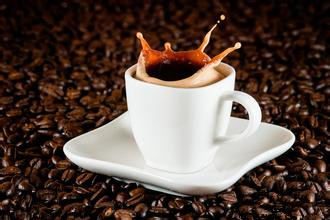Coffee common sense the characteristics of different kinds of high-quality coffee beans in different countries

Yunnan Coffee in China
Coffee is a product of the tropics. You may not believe it, but the best coffee growing area in the world is in Yunnan Province of China. Unfortunately, Chinese people do not pay attention to coffee, do not know how to use coffee in exchange for foreign exchange…also have no hobbies, but very fond of drinks. The so-called drink is not alcohol, but coffee everywhere. I've tasted it all, and I didn't know it until today. The best coffee producing area is not Colombia, Turkey, Indonesia, but the mainland of China. After inspecting Yunnan coffee planting and primary processing bases, experts from the International Coffee Organization evaluated Yunnan coffee as Colombia wet-processed Arabica coffee, which is the highest quality coffee in the world.
It is well known that coffee is produced from the equator to 15 degrees north latitude, so it is produced in South America and Indonesia and Africa. However, coffee produced at the equator to 15 degrees north latitude is too strong and bitter, so only some people who drink coffee and do not know its taste will like it. In fact, the best coffee should be produced between 15 degrees north latitude and the Tropic of Cancer.
Coincidentally, the southern part of China's Yunnan Province (especially near Laos) and the northern part of Yunnan Island happen to lie on the upper edge of this golden belt. Hawaii, Saudi Arabia and other places in the United States, although located in this zone, on the one hand, Hawaii has no mountains, no fog, and on the other hand, there is no water in the sandy desert, so coffee cannot settle down. Therefore, the best coffee production in the world is actually in China.
Brazil
Brazil is a producer of coffee, with a third of the world's coffee consumed in all grades and varieties. There are many kinds of coffee here, although there are not many excellent coffee, but it can be used to make coffee blends with other coffees.
Taste characteristics: mild, sour and bitter moderate, soft aroma.
·Best cooking degree: medium cooking
Colombia
It is the second largest coffee producer after Brazil, producing everything from low to high grade coffee, some of which are rare in the world and taste delicious. The most popular is mantenin, which has a rich taste and a pleasant acidity. Supremo, also Colombia's premium coffee, has a unique aroma, bitter with sweet. It's the best coffee in the world.
Mexico
It is the main coffee producing country in Central America, where the coffee tastes comfortable and fragrant, and the top Mexican coffees are Coatepec (Coatepec), Huatusco (Huatusco), Orizaba (Orizaba), among which Coatepec is considered one of the best coffees in the world.
Top quality beans: Mexican Aldora
Flavor characteristics: large grains and sweet and sour, strong flavor.
Best cooking degree: medium ~ deep
Hawaii
Hawaii sightseeing, in addition to beautiful beaches, do not forget the Hawaiian coffee beans-Kona. The palate is sweet with wine acidity, which is very special. Hawaii's most traditional and famous coffee. However, due to the low production volume here, the surprisingly expensive cost, and the increasing demand for single-serve coffee in the United States and other places, its unit price is not only higher and higher, but also difficult to obtain.
Taste characteristics: strong acid, mellow, all have tropical flavor.
Best cooking degree: medium ~ deep
Indonesia
When it comes to Indonesian coffee, you must not miss Sumatra's high-grade mantelin. Its unique aroma and slightly acidic taste can be said to be the best in the world. In addition, Arabica coffee produced in Java is a favorite of Europeans, which has a bitter sweet, sweet and sour aftertaste that lasts for a long time.
Top quality beans: Sumatra Mantenen
Taste characteristics: bitter and intense, but also sweet.
Best cooking: depth
Costa Rica
Costa Rica's high latitudes produce coffee beans that are famous in the world for their rich, mild taste, but extremely sour, and the beans here are carefully processed to produce high-quality coffee. The famous coffee is produced in the Central Plateau, where the soil consists of successive layers of volcanic ash and dust. It has a good taste and a high evaluation.
Top quality beans: Costa Rican Mount Coral
Taste characteristics: moderate acidity and mellow.
Best decocting degree: medium
Angola
It is the fourth largest coffee producer in the world, but produces only a small amount of Arabica coffee, which is of high quality.
Taste characteristics: aroma and acidity are excellent.
Best cooking degree: medium ~ deep
of Ethiopia
It is the home of Arabica coffee, grown at high latitudes and requires a lot of manual care. Here is the famous Ethiopian mocha, which has a similar acidity to wine, aroma, and rich yield.
Jamaica
Jamaica's national treasure, Blue Mountain Coffee is perfect in every way, just like wine, and many wineries are now bought by the Japanese. The Japanese have bought most of Jamaica coffee in recent years, so it has become difficult to get it on the market.
High quality beans: Blue Mountain/High Mountain
Taste characteristics: consistent acid, bitter, sweet, aroma is also good.
Best cooking degree: mild to moderate
Kenya
Kenya grows high-quality Arabica coffee beans, coffee beans almost absorb the essence of the whole coffee cherry, has a slightly sour, thick aroma, is very popular with Europeans, especially in the United Kingdom, Kenyan coffee has surpassed Costa Rica coffee, become one of the most popular coffee.
Top quality beans: Kenya AA(double A)
Taste characteristics: strong acid and fragrance, German favorite.
Best cooking: depth
Yemen
Yemeni mocha coffee was once popular, mocha coffee is still used to accompany other coffee beans or mixed coffee beans soul. Yemen is commonly known as arabia, the birthplace of arabic gram species, once known as "mocha coffee" and popular for a time, but now it is no longer a grand occasion. However, its mellow flavor and rich fragrance are still quite popular with consumers.
Top quality beans: Golden Horse Tower
Taste characteristics: slightly sour and strong aftereffect, but also sweet.
Best cooking degree: medium ~ deep
Peru
The up-and-coming Peruvian coffee is gradually opening up its popularity and entering the world. It is mostly planted in high-altitude areas, planned planting makes the yield greatly improved, the taste is mellow, the acidity is appropriate, and more and more people like it.
Taste characteristics: mellow taste, acidity appropriate.
Best decocting degree: medium
Guatemala
The central region of Guatemala is home to world-famous, high-quality coffee, which is often roasted with charcoal, cocoa and slightly acidic.
Taste characteristics: bitter and fragrant, good taste.
Best cooking: depth
El Salvador (Central America)
Joined Mexico and Guatemala as producers of the Azamel Group, and is competing with other countries for the top one or two in Central America. Grown in the highlands, it is a large coffee bean of equal size with a strong and mild taste.
Top quality beans: Salvador SHB
Tao characteristics: acid, bitter, sweet mild moderate.
Best cooking degree: medium ~ deep
Honduras (CA)
Wash coffee beans from mountainous areas are better received, while coffee beans from lowland areas are slightly inferior.
Taste characteristics: sour and slightly sweet.
Best cooking degree: medium ~ deep
Cuba
Coffee was introduced from Haiti by the French in the mid-18th century. Coffee beans have moderate characteristics-large grains, bright green color and high quality coffee beans.
Top quality beans: Cuba Cristal Mountain
Taste characteristics: stable taste. Acid, bitter and sweet balanced.
Best decocting degree: medium
Important Notice :
前街咖啡 FrontStreet Coffee has moved to new addredd:
FrontStreet Coffee Address: 315,Donghua East Road,GuangZhou
Tel:020 38364473
- Prev

Coffee common sense the difference between the taste of large and small coffee beans
For the same kind of coffee, the bigger the bean, the higher the grade, the smaller the bean, the lower the grade, and the cheaper it is. Of course, there are differences in taste. The bigger the beans, the stronger the coffee. However, in addition to high-grade products, the classification of other coffee is not very strict, for example, the central grade beans can account for 60%. Then beans that are one level higher than this level and beans that are smaller will each have two at the same time.
- Next

Coffee Bean Selection 10 Elements to Consider When Choosing Coffee Green Beans
Green bean sellers are primarily responsible for grading coffee beans before selling them to coffee bean merchants. After grading, premium and premium coffee beans are selected, although they may have some flaws that do not affect the coffee rating. These flaws are less severe, but they can potentially damage coffee quality. Although Cupping is undoubtedly the clearest way to examine coffee beans
Related
- Beginners will see the "Coffee pull flower" guide!
- What is the difference between ice blog purified milk and ordinary milk coffee?
- Why is the Philippines the largest producer of crops in Liberia?
- For coffee extraction, should the fine powder be retained?
- How does extracted espresso fill pressed powder? How much strength does it take to press the powder?
- How to make jasmine cold extract coffee? Is the jasmine + latte good?
- Will this little toy really make the coffee taste better? How does Lily Drip affect coffee extraction?
- Will the action of slapping the filter cup also affect coffee extraction?
- What's the difference between powder-to-water ratio and powder-to-liquid ratio?
- What is the Ethiopian local species? What does it have to do with Heirloom native species?

